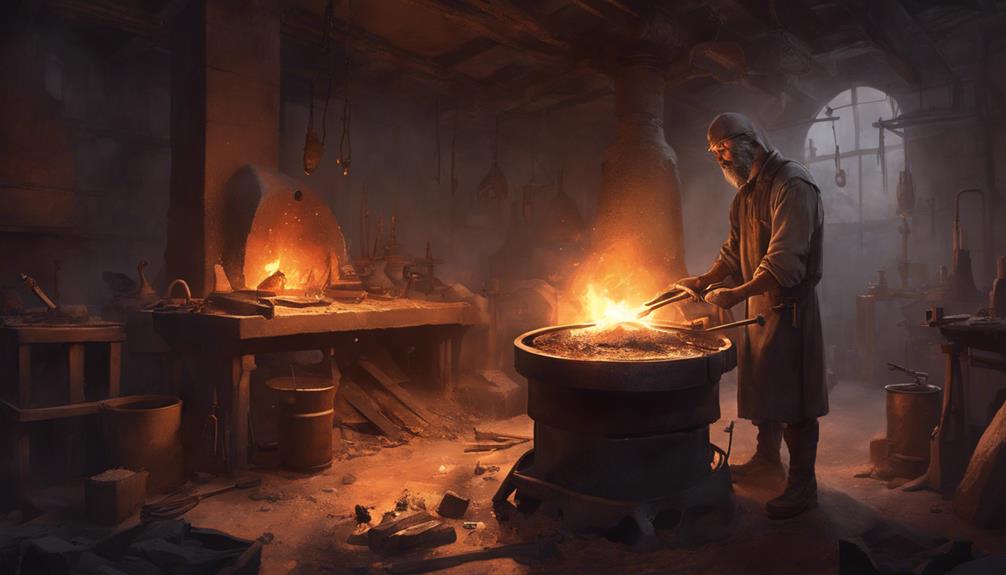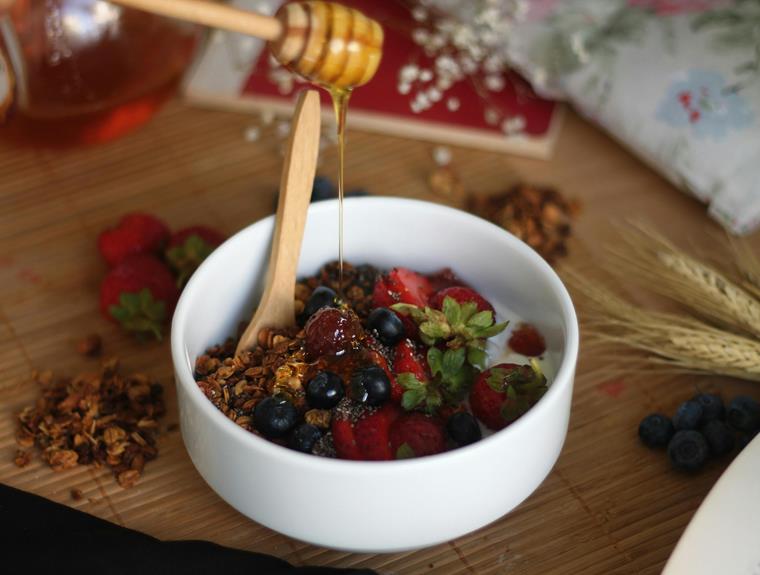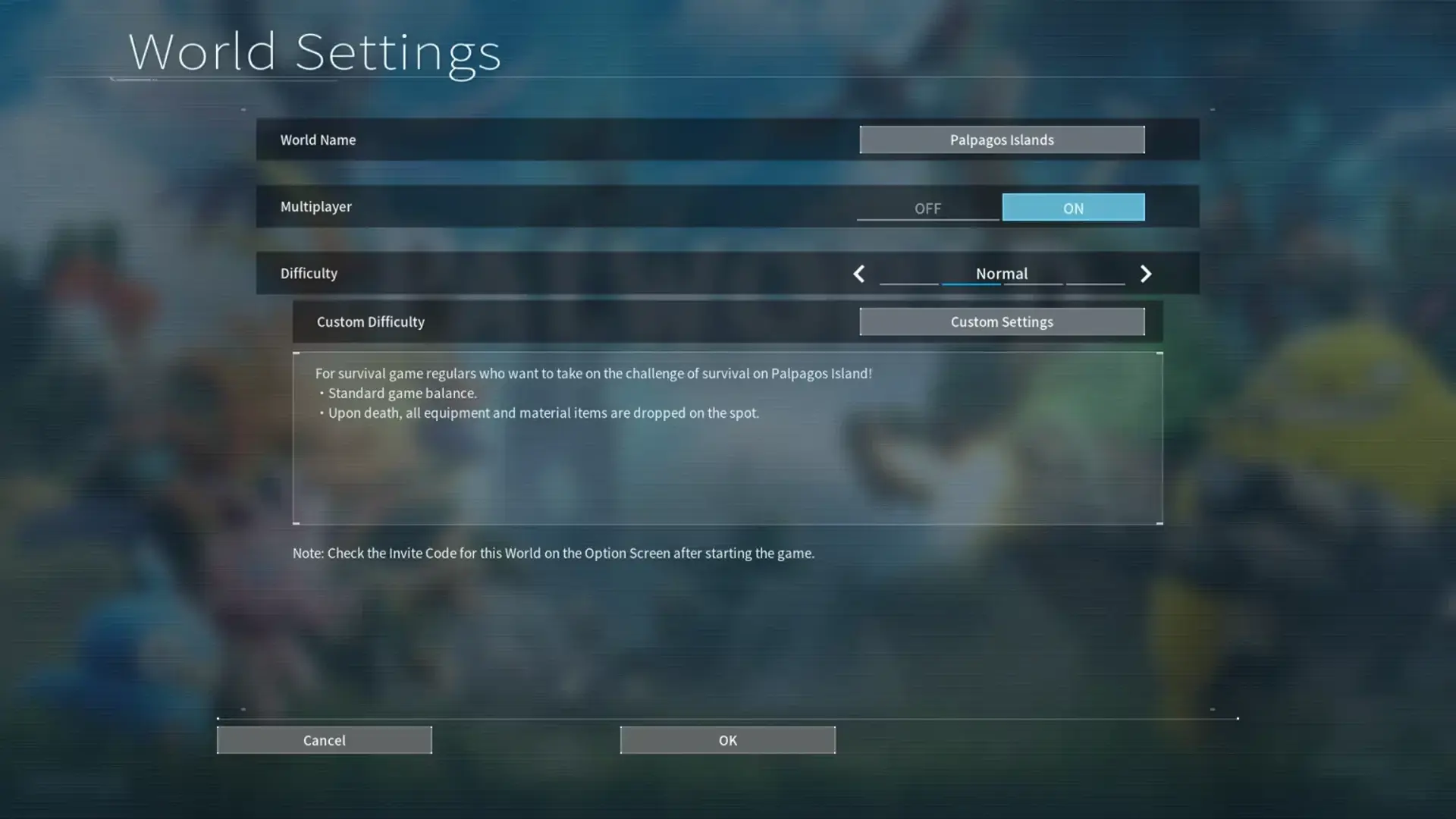To get clay efficiently in '7 Days to Die,' smelt clay soil in the forge. Gather clay, important for crafting forged iron, from playgrounds. Maintain forge temperature when crafting to succeed. Clay transformation has specific properties. Find clay in pits or riverbanks where soil color changes. The process includes enhancing gameplay with clay crafting. Progress by creating forged iron using smelted clay with iron ingots. Essential for making tools, weapons, and structures. Enhance your survival with this.
Key Takeaways
- Clay soil smelting in the forge yields essential clay for crafting forged iron.
- Clay deposits are commonly found in clay pits and riverbanks in the game.
- Monitoring the smelting process closely enhances gameplay efficiency.
- Riverbank clay deposits ensure a steady supply for crafting in 7 Days to Die.
- Understanding the forge's smelting process is crucial for successful clay transformation.
Clay Acquisition Methods
To efficiently acquire clay in 7 Days to Die, players must smelt clay soil in the forge as the primary method for obtaining this essential resource. Clay in 7 Days is no longer naturally occurring, so smelting clay soil becomes important. Clay soil is commonly found in locations like school play yards, and it serves as the carrier of clay in the game. By smelting clay soil in the forge, players can yield clay for crafting purposes, especially for making forged iron. This process involves placing the soil in the forge's smelting slots and activating it to obtain the desired clay.
Understanding the clay acquisition methods is crucial for progressing in the game. Without clear tutorials or guidance on using the forge efficiently, new players may find the process of obtaining clay confusing. Therefore, mastering the art of smelting clay soil is important for any player looking to thrive in 7 Days to Die. By focusing on this method, you can ensure a steady supply of clay for your crafting needs, enabling you to create essential items like forged iron to survive and thrive in the game world.
Smelting Clay Soil

To begin smelting clay soil, you need to gather the necessary materials and fuel for the forge. Heating the clay soil in the forge will transform it into molten clay, ready for crafting. Once smelted, the clay can be molded into various useful items for survival in 7 Days to Die.
Clay Soil Properties
Clay soil, a valuable source of clay, can be transformed into usable material through the process of smelting in a forge. Here are some key properties of clay soil that make it an excellent material for crafting:
| Property | Description |
|---|---|
| Plasticity | Clay soil has high plasticity, allowing it to be easily molded and shaped into various forms. |
| Cohesiveness | It has strong cohesive properties, enabling it to stick together well when moistened. |
| Water Retention | Clay soil has good water retention capabilities, making it ideal for retaining moisture for plant growth. |
Smelting Process Overview
When smelting clay soil in a forge, the initial step involves placing the clay soil inside and activating the forge to begin the process. As the clay soil undergoes smelting, it will appear in the materials list along with other resources. The smelting process transforms the clay soil into usable clay, essential for crafting in 7 Days to Die. Once smelted, the clay can be conveniently accessed from the tool belt to craft specific items. Smelting clay soil is a necessary step to obtain clay for various crafting purposes in the game. Make sure to monitor the progress closely to guarantee the clay soil is properly processed for your crafting needs.
Crafting Clay Items
When smelting clay soil in a forge, make sure that the process is closely monitored to successfully obtain usable clay for crafting purposes in 7 Days to Die. Clay is essential for making various items in the game, such as forged iron and pottery. To guarantee a successful smelting process, remember to:
- Keep the forge temperature at the right level to prevent under or over smelting.
- Use a Crucible attachment for the Forge when working with clay for making advanced items.
- Monitor the clay transformation process closely to avoid wasting resources.
Crafting with clay can greatly enhance your survival chances in 7 Days to Die, so mastering the smelting process is key to your success.
Crafting Forged Iron

Craft Forged Iron in 7 Days to Die by smelting Iron Ingots in the Forge with Clay as a key ingredient. When crafting Forged Iron, players combine Iron Ingots, Clay, and a fuel source like Wood or Coal in the Forge. This process is essential for creating advanced tools, weapons, and reinforced structures important for your survival in the game.
Forged Iron plays a significant role in advancing your gameplay and facing tougher enemies. It is a versatile material used in various crafting recipes, allowing you to create powerful gear and fortify your base against threats. Without a steady supply of Forged Iron, progressing through the game becomes more challenging.
Efficiency in smelting and crafting Forged Iron is paramount. Ensuring you have enough Clay, Iron Ingots, and fuel to keep the Forge running smoothly is key to your success. With Forged Iron, you can upgrade your arsenal, improve your defenses, and enhance your overall gameplay experience.
Finding Clay Locations

When looking to find clay in 7 Days to Die, you should focus on specific locations such as clay pits or riverbanks. These areas are known to have abundant clay deposits that can be smelted for crafting purposes. Remember to gather enough clay to sustain your crafting needs efficiently.
Clay Pit Locations
To uncover clay pit locations efficiently, scout for areas near bodies of water or rocky terrain where clay is commonly abundant. When searching for clay pits, consider these key points:
- Look for areas near rivers, lakes, or ponds where clay is often found.
- Explore open fields or areas with rocky terrain, as clay pits can also be located there.
- Keep an eye out for visual indicators like changes in soil color or mounds that may signify clay deposits nearby.
Riverbank Clay Deposits
Head to the riverbanks in 7 Days to Die to locate abundant clay deposits for your crafting needs. Riverbank clay deposits are crucial for gathering clay in the game. These deposits are commonly found near water sources, making riverbanks prime locations for clay hunting. With clay nodes removed, riverbanks have become the go-to for players seeking this resource. When exploring, keep an eye out for areas along rivers and water bodies where clay is likely to be plentiful. By focusing on riverbank clay deposits, you can guarantee a steady supply of clay for your crafting endeavors. Make the most of these locations to gather the materials you need to survive and thrive in 7 Days to Die.
Clay in School Play Yards

Clay in school play yards serves as a valuable resource for players in 7 Days to Die. When you enter these areas, you'll notice:
- Cracked Pavements: The once vibrant school yards now lay barren, with cracked pavements providing glimpses of clay hidden beneath the surface. As you tread carefully, the crunch of gravel under your boots signals the proximity of valuable clay deposits.
- Abandoned Play Structures: Rusty swings sway gently in the wind, and old slides stand as silent sentinels of the past. Amongst these forgotten play structures, pockets of clay soil await your discovery. The juxtaposition of childhood memories and survival instincts creates a unique atmosphere in these desolate playgrounds.
- Overgrown Gardens: Nature has started to reclaim the school yards, with weeds and wildflowers sprouting between concrete slabs. Amidst this overgrowth, patches of clay-rich soil emerge, ready to be harvested for your crafting needs. The clash of man-made structures and natural elements paints a picture of resilience and adaptability in this post-apocalyptic setting.
Exploring school play yards in 7 Days to Die not only offers a chance to gather essential resources but also provides a glimpse into a world where education and innocence have given way to survival and resourcefulness.
Community Feedback Impact

Amid the evolving landscape of player suggestions and critiques, community feedback shapes the development path of 7 Days to Die. The community's input plays a significant role in influencing the game's mechanics, including the intricate process of acquiring and processing clay. Players have expressed frustration over the lack of guidance regarding clay mechanics within the game. Suggestions for in-game tutorials to aid players in understanding clay processing have emerged from this community feedback.
New players, in particular, may find the clay acquisition process confusing without clear instructions. This feedback highlights the importance of incorporating user-friendly guidance to enhance the overall player experience. As the game developers continue to refine gameplay mechanics, community feedback remains a crucial component in driving these changes. By listening to the players' experiences and suggestions, the development team can address areas of confusion or difficulty, ultimately improving the game for both new and experienced players.
Understanding the Smelting Process

When moving on to the smelting process in 7 Days to Die, understanding how to convert clay soil into usable clay material is essential for crafting essential items. To grasp the smelting process better, consider the following:
- Place Clay Soil: Begin by placing the clay soil in the designated smelting slots of the forge. This is the initial step to kickstart the transformation process.
- Activate the Forge: Once the clay soil is in place, activate the forge to apply heat to the material. This heat is important for converting the clay soil into usable clay material.
- Observe Clay Formation: As the smelting process progresses, keep an eye out for the clay to appear in the list of materials being processed. This signifies that the clay is being extracted and is ready for use in crafting.
Understanding how to smelt clay soil is paramount in 7 Days to Die as clay serves as a fundamental material for crafting various items within the game. By following these steps, you can efficiently obtain clay for your crafting needs and enhance your gameplay experience.
Improving Player Experience

Enhance your gaming experience by incorporating feedback-driven improvements to streamline player interactions and increase overall satisfaction. For new players, the clay acquisition process can be perplexing without proper tutorials or guidance on using the forge efficiently. Many have expressed frustration over the lack of clear instructions on clay mechanics, emphasizing the necessity for in-game tutorials. Community feedback underscores the significance of providing clear guidance on clay processing to enhance the player experience.
Suggestions have been put forth to enhance gameplay through tutorials that elucidate the smelting process and clay mechanics. The ongoing development of the game focuses on refining gameplay mechanics based on community feedback, with expectations for future tutorials and in-game guidance enhancements. By implementing these changes, new players can navigate the clay acquisition process with ease, fostering a more enjoyable gaming experience for all. Clear instructions and tutorials will not only aid new players in understanding the mechanics but also contribute to a more immersive and satisfying gameplay environment. As the game evolves, incorporating player feedback will continue to be instrumental in shaping a more intuitive and engaging experience for all players, both new and experienced.
Frequently Asked Questions
What Is the Easiest Way to Get Clay in 7 Days to Die?
The easiest way to get clay in 7 Days to Die is by digging clay soil with a shovel. You can craft a stone shovel to collect clay efficiently. Then, smelt the clay soil in a forge to obtain clay for crafting various items. Explore places like school play yards to find clay soil. Remember that clay nodes have been removed, and now you get clay by processing soil in the forge.
Is Clay and Clay Soil the Same Thing in 7 Days to Die?
Yes, clay and clay soil are not the same in 7 Days to Die. Clay soil is the raw form of clay that you'll need to smelt in a forge. This process is important for crafting items like forged iron. Did you know that clay can be found in various locations in the game, such as school play yards? So, remember to smelt that clay soil to get your hands on the essential crafting material!
How to Turn Lump of Clay Into Clay 7 Days to Die?
To turn a Lump of Clay into usable Clay in 7 Days to Die, place it in the forge. Activate the forge with fuel and a heat source to start the smelting process. The Lump of Clay will melt and transform into Clay material. This resource is valuable for crafting items like forged iron in the game. Smelting the Lump of Clay is essential for accessing advanced crafting options in 7 Days to Die.
What Color Is Clay in 7 Days to Die?
In 7 Days to Die, clay comes in various colors like gray, brown, or red. The color of clay depends on the minerals in the area you're in. Different biomes have clay in different colors, adding visual diversity to the game. Identifying clay by its color can help you efficiently gather this resource. The clay's color not only makes it visually appealing but also aids in resource collection.
Conclusion
So there you have it, in just 7 days you can become a clay expert in 7 Days to Die. Just remember, clay is not just for pottery class or school projects anymore – it's an essential resource for survival in the game. So get out there, dig up some clay, and start smelting like there's no tomorrow. Who knew playing in the mud could be so important?










